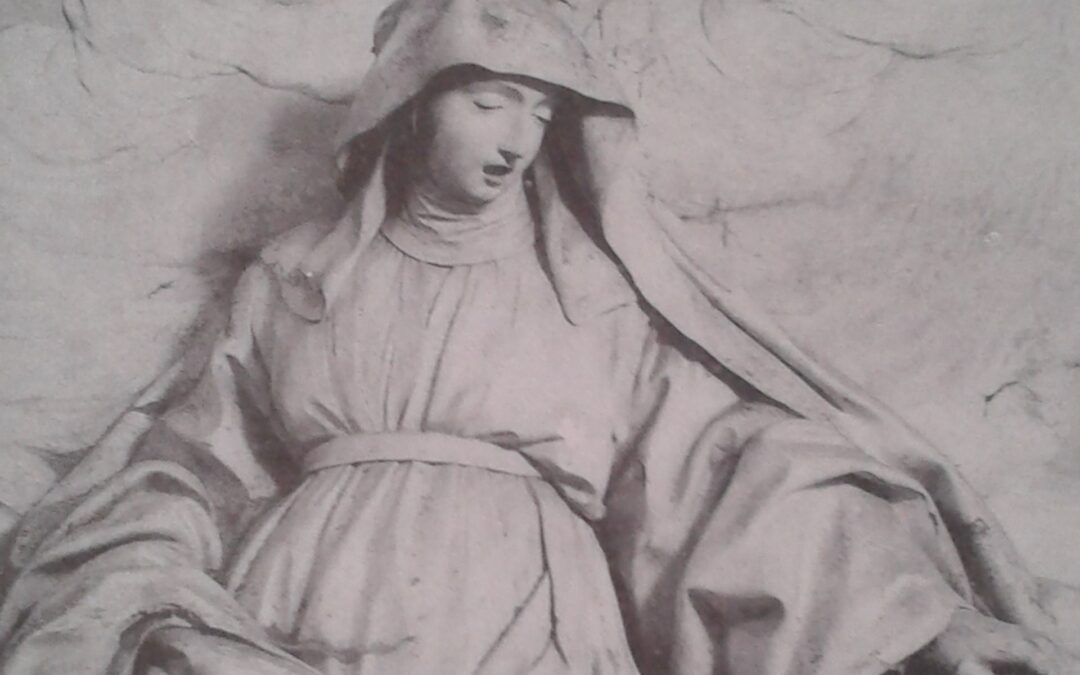Think for a moment about how society has historically portrayed “Christian women.” I bet certain images spring readily to mind. A demure young woman, head bowed in prayer. A kind, motherly, pulled-together lady in a sweater set or a fabulous hat, depending on one’s era and tradition. Someone in an apron, baking bread.
I have nothing against sweater sets, bread or prayer… but perhaps something is missing here. What comes to mind when you think of the real Christian women who lead in your congregation or community?
My mind turns toward my friend Angie of blessed memory: a terrific baker, a caring friend and someone who possessed both a wonderful smile and an impressive array of sarcastic facial expressions. I think of my grandmother, who arranged the flowers for years at Bethlehem Lutheran Church, worked fulltime long before that was typical, and did not suffer fools well, to put it mildly. I also think of beloved women who’ve run the congregation council, dialed in young children—and adults—with a glance, supported others when they’ve been discouraged, and kept both the financial accounts and the hospitality team in good order. In short, a good Christian woman is a force of nature.
For a woman like me—trained as a historian and running Fortress Press as the first woman in that role—this knowledge is comforting. Unfortunately, women haven’t always been able to write their own history. Literacy was often the preserve of the elite. Reading and writing were seen in many times and places as separate skills, so even a woman who could read might not be able to commit her thoughts to parchment or paper. Such deficiencies in the historical record can sway us toward the stereotypes of docility and subservience that plague us.
Thankfully, there have been exceptions. Take Perpetua, for instance. Perpetua lived in the African city of Carthage at the turn of the third century. Carthage was part of Rome, and the Roman government wanted everyone to worship Roman gods. Perpetua, however, was a Christian.
Perpetua’s small community was preparing to baptize new believers—including Perpetua— when they were swept up and sent to prison. Perpetua, a young mother, refused to recant her faith, even in the face of pleading and violence from her father. She experienced visions. One told her she would become a martyr. Another—a tournament in which she fought and triumphed over a gladiatorial foe—revealed to her that while animals might tear her flesh, her real battle was against the devil, and that was a battle she would win.
Why do we know all this? Because she wrote it down!
Perpetua kept a prison diary, and thus her own words give us one of the earliest accounts of a Christian martyr. They show us that she defied her family, her government and her own sense of security for the sake of her faith. A force of nature, indeed.
Other women remind us that faithful discipleship can take many different forms—not all of them as stark or violent as Perpetua’s experience.
Birgitta of Sweden was born in 1303 to a powerful family. She married and had eight children. Both she and her husband were notably devout, undertaking pilgrimages to holy sites throughout Europe as a couple. She was widowed at about age 41. Birgitta moved to Rome, where she became a prolific author, recording the contents of the 700 visions she experienced over the years and founding the Birgittine religious order. This new network of religious women spread Birgitta’s writing—much of which challenged the prevailing political and religious landscape— throughout medieval Europe. Birgitta’s visions were almost always tied to political events. She criticized slavery and the Hundred Years’ War. Her writing became important once again during the Renaissance as Italian reformers sought inspiration and guidance.
Two medieval women even became Doctors of the Church, a title granted by the Roman Catholic Church to those whose writing and teaching have been distinctively holy and influential— just 37 figures to date, only four of whom are women. Their stories continue to illustrate a growing theme: They relied on their visions and personal experiences to grant them authority and purpose.
Hildegard of Bingen was an abbess, author, medical practitioner and musician who lived in the 12th century in what we now call Germany. Though she was born into a wealthy noble family, Hildegard was sickly as a child and given almost no formal education as a result. Instead, she turned inward, forging a mystical relationship with God. Hildegard was placed with an anchoress (a woman religious recluse) named Jutta when she was just eight years old. She became part of Jutta’s Benedictine cloistered community.
Hildegard provides us with an example of a woman who came into her power as a leader in middle age. Jutta died when Hildegard was 38. It was at this point that Hildegard began to truly respond to her prophetic visions. She became Mother Superior of Jutta’s convent and moved it to Rupertsburg, a town near Bingen on the Rhine. While she was a prolific author, Hildegard “wrote” all her books and treatises via scribes as she never learned to write in her own hand. Her output included early herbalist manuals offering guidance on how to heal medical conditions, works of philosophy, and a large collection of hymns and other religious music.
Catherine of Siena, the other medieval Doctor of the Church, forged her own distinctive path as a mystic. Catherine was born into a family of cloth dyers in 14th century Siena, a city in present day Italy. She, too, experienced visions from a young age. Her unique experiences created in Catherine a determination to become an ascetic and live a pledged religious life. Her commitment even led Catherine to carry out a late-medieval form of adolescent rebellion: At the age of 15, she chopped off her hair to make herself unsuitable for marriage!
While she wanted to live a religious life, Catherine hesitated to become a nun and cut herself off from society. Instead, she joined a “tertiary” movement of pledged religious laywomen called the Third Order of the Dominicans. While she served the poor and frequently experienced ecstatic religious visions, Catherine was especially committed to the work of evangelism.
Evangelizing as a woman challenged the religious mores of the time. Initially, Catherine worried about this criticism. Turning toward prayer and contemplation to discern God’s calling, she heard God say, “Does it not depend on My will where I shall pour out my grace? With me there is no longer male or female, lower and upper classes, but all are equal in My sight.” Having received her answer, Catherine resolved to keep spreading the Good News.
Like Birgitte, Catherine critiqued corruption in the church of her day. Late in life, she taught herself to write so that she could record the content of her visions in a book called The Dialogue. While her reform efforts at the time were largely unsuccessful, the record of her experiences that Catherine left behind has inspired countless generations.
I am grateful for the witness of Perpetua, Birgitta, Hildegard and Catherine—Christian women with the formidable qualities we know womanhood entails. May we follow their lead and become forces of nature for Christ in our own time and place.
Laura Gifford is an ELCA deacon and holds a Ph.D. in American history. She is editor-in-chief of Fortress Press. Laura lives in Portland, Oregon, with her husband, daughter and cats and is a member of Resurrection Lutheran Church, Portland.
This article appears in the March/April/May 2025 issue of Gather. To read more like it, subscribe to Gather.
Image: GIACOMO SERPOTTA SANTA PERPETUA DETTAGLIO. ROCCO LENTINI, CC BY-SA 4.0, VIA WIKIMEDIA COMMONS



